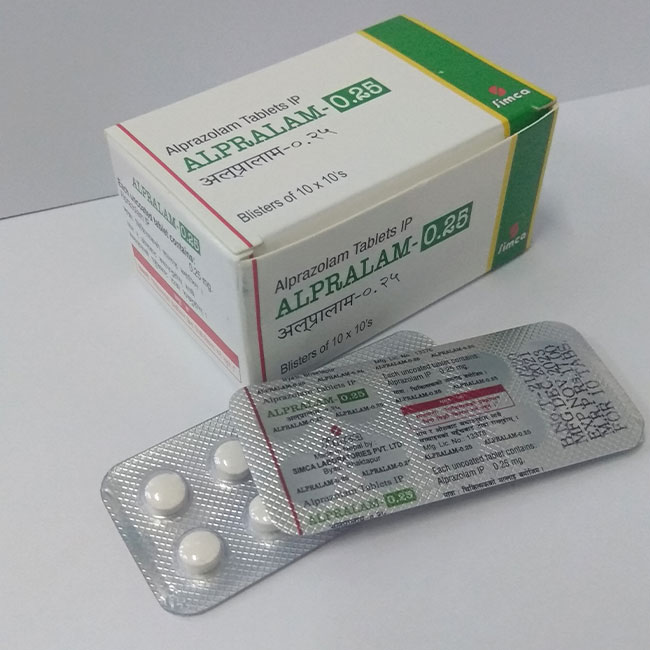Alprazolam (Alprazolam 0.25mg)
ALPRALAM (Alprazolam 0.25mg tablets)
Introduction
Alprazolam is a fast-acting tranquilizer of medium duration in the triazolobenzodiazepine (TBZD) class, which are benzodiazepines (BZDs) fused with a triazole rings indicated for the treatment of anxiety and panic disorders.
It is intermediate acting benzodiazepines. It belongs to a class of drugs called Anti-anxiety, Anxiolytics Benzodiazepines. It may be used alone or in combination with medications.
Mechanism of action
Alprazolam binds to Benzodiazepines site of GABA-A receptors in the brain and enhancing the GABA-mediated synaptic inhibition and resulting in calming effect.
Binding of alprazolam to the GABAA receptor, a chloride ion channel opens and enhances the effects of GABA thus chloride enters the cell which makes it more resistant to depolarization. Therefore, alprazolam has a depressant effect on synaptic transmission to reduce anxiety.
Pharmacokinetic
Alprazolam is rapidly absorbed in GI tract, oral bioavailability is 84-91%, alprazolam is 80% protein bound, alprazolam is metabolized via liver (substrate of CYP3A4) , eliminated in the urine, half life is 11.2 hours; in elderly 16.3 hours, volume of distribution is 0.8-1.3L/kg, crosses the blood brain barrier.
Dose
- 25mg to 0.5mg three times a day; maximum daily dose is 4mg, dose may be increased at a interval of 3 to 4 days, dose tapering should be done while discontinuing the drug by not more than 0.5 mg every 3 days.
Dose Adjustment:
- Renal impairment: No specific recommendation
- Hepatic impairment: 0.25mg 2-3 times a day; increase needed and tolerated
- Geriatrics: 0.25mg 2-3 times a day; increase needed and tolerated
Indication
Generalized anxiety disorder, anxiety associated with depression, panic disorder with or without agoraphobia.
Off label use in insomnia, premenstrual syndrome and depression.
Side effects
Decrease in appetite (7-28%), increase in appetite (7-33%), constipation, reduced salivation, xerostomia, weight gain, Sedated, Lightheadedness, somnolence, in-coordination, memory impairment, confusion, irritability, feeling anxious early in the morning, reduced libido, fatigue, Seizure due to drug withdrawal
Drug Interactions
- Use with other CNS
- Digoxin
- Imipramine and Despiramine
- OCPs
- Fluoxetine, Propoxyphene
- Drug that inhibit CYP3A enzyme.
Precautions
- Geriatric patients: Avoid use in elderly patients due to greater BZD sensitivity, esp. in patients with history of falls and fractures, cognitive impairment or dementia and delirium
- Use caution when driving or operating heavy machinery
- Risk of seizure recurrence upon rapid discontinuation; slow taper recommended for patients with history of seizures
- Uricosuric effect
- Mania/Hypomania reported in patients with depression
- Suicidal thoughts been reported, increased monitoring recommended with patients with depression
- Birth defect risk in pregnant mothers, avoid use in first trimester
- Use in pediatric patients
Contraindications
- Hypersensitivity to Benzodiazepines
- Pregnancy
- Nursing mothers: Excreted in breast milk
Pregnancy category: Category D
Advantages:
- High potency anxiolytic BZD which in addition has some mood elevating action in mild depression


